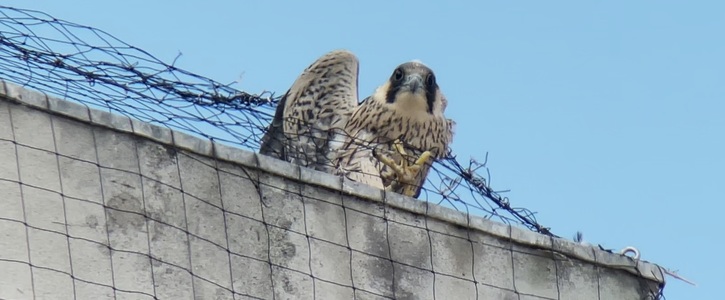What should the University be doing?
-Manage at least 50% of grassy areas as wildflower meadows
-Create new wildlife ponds
-Plant more flower beds with species for pollinators
-Erect nestboxes for birds such as Swifts
-And manage existing green areas with wildlife in mind, rather than 'tidying them up' to the point of wrecking their ecological value
Why is this important?
None of these actions would require significant investment, in fact these are very simple and cost effective steps for the University to undertake. They would however deliver a big return in value. The University's now defunct Sustainability Strategy states: "Even in this urban setting we can make a real difference in terms of biodiversity. And this can also reap benefits – improved health and wellbeing, education, volunteering opportunities, a reduction in flooding and an enhanced image can all be realised through a thriving natural environment". A positive change for wildlife will make the campus a beautiful and inspiring place to work and study.
Doing more for nature on campus would be a win-win scenario for wildlife, staff and students. We call on the Vice Chancellor, Simone Buitendijk, and the University of Leeds to take action now.
The world is in the midst of a biodiversity crisis. 70 of our British bird species are red listed. Numbers of pollinators and other flying invertebrates are crashing. The University of Leeds' own research has documented this and raised the alarm. Yet despite having a biodiversity plan, the main University campus remains a hostile environment for wildlife. The University's token efforts to support biodiversity are well meaning but effectively amount to little more than institutional green washing.
Here are 4 concrete examples of the University's failure to take biodiversity seriously:
Wild Peregrine Falcons have been present since 2015 and have nested successfully several times on the Parkinson Tower. Yet anti-pigeon netting was only partially removed when a social media storm about Falcons trapped under the netting forced the University to take action. The Peregrine Falcon is a Schedule 1 species, meaning it has the highest degree of protection in law. 3 dead Peregrine Falcons were found under the nets. A remaining piece of netting has not been removed despite promises made in June.
An Ecology student studying at the University of Leeds found possible Pyramidal Orchids growing on a small area of grass on campus. He notified Estates and the Sustainability Department. Despite this, the Orchids were strimmed.
In Spring 2021 the University gardeners were seen cutting down all the bushes and scrub in St George's Fields on campus. The University's Biodiversity Action Plan congratulates itself (100% score) for "planting of native tree and shrub species" and "improve the biodiversity value of hedgerows on campus" yet existing scrub has regularly been removed - even in the nesting season.
The Roger Stevens pond was "rewilded" in a fantastic effort to turn this concrete pond into a place for wildlife. But a member of the Estates team has been regularly adding non-native fish - a guaranteed way of removing natural invertebrates and destroying the wildlife. The dragonflies touted in a message from the University on social media, are rarely present.
The University Biodiversity Action Plan reveals a score of 0% for "Protect areas important to local or campus biodiversity". In a single statement this reveals that the University is almost completely failing in its commitment to nature.
The Sustainability Department have an array of green initiatives but without serious support from the rest of the University, their well intentioned efforts amount to little more than institutional green washing. It is unacceptable for the University to use these token steps for wildlife as a box ticking exercise to avoid taking genuine action.


